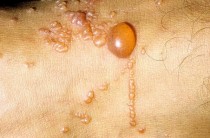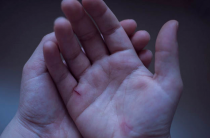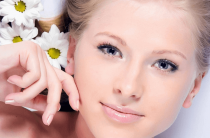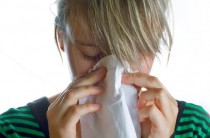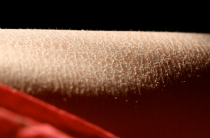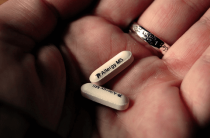Perhaps it is impossible to meet the same common disease in a modern person as an allergy. The World Health Organization provides up-to-date data according to which 10% of the population of our planet is allergic. Modern environmental conditions, the scarce content of vitamins and minerals in food, as well as a large number of synthetic production substances that are used in the food industry and everyday life.
In addition to these factors, heredity in some cases is of tremendous importance. The presence of allergies in the mother, father or close relatives of the child may be the reason for the occurrence of allergies in a newborn child. This issue is especially acute in cases where allergy sufferers are both the father and mother of the child.
As a disease, allergy is an exacerbated reaction of the immune system of a sick person, during which antibodies are secreted not to harmful, but, on the contrary, to harmless environmental factors. Such factors that medical science calls allergens can be a variety of substances: cat hair, house dust, flowering plants, food. In fact, this disease can develop in relation to any substance that enters the human body. A variety of factors that can serve as provocateurs of immune reactions leads to an equally extensive number of types of this disorder.
Types of allergies can vary, depending on the classification system for this disease. So, if we distinguish between the factors that cause it, it can be an allergy to dust in the house, plant pollen, animal hair, food, etc. At the same time, varieties can be distinguished, depending on the symptoms of this disease. Another division of allergies into types is based on the characteristics of the patient himself, since this disease in adults, children, infants, pregnant women has different specifics, features of the course and nature of the manifestation. As part of this article, types of allergies in the photo will be provided.
Varieties of allergies can be divided according to the nature of the manifestations into acute and chronic:
Acute form of allergy
Allergy symptoms in an acute form appear instantly, immediately after contact with the allergen. When eliminated, the causes just as quickly disappear. This form is typical for such types of allergic reactions as anaphylactic shock, Quincke's edema, acute urticaria. For the development of an acute form of an intolerance reaction, a single contact with the allergen is sufficient.
Chronic form of allergy
For this type of immune response, the slow development of symptoms of the disease is characteristic. The development of chronic forms of allergy occurs after a considerable time, after contact with the allergen. Treatment of chronic allergies is longer.
Allergic dermatitis
Allergic dermatitis is an allergic manifestation with the development of skin-inflammatory processes that occur under the influence of an allergen. After eliminating the cause of the appearance, the symptoms of allergic dermatitis gradually disappear.
Allergic dermatitis refers to an allergic response that develops slowly. The relative slowness of the development of symptoms of this type of reaction by the lymphocytic method of their implementation is determined. In this case, for the development of symptoms, the presence of leukocytes directly at the site of their manifestation is necessary. The process of moving these large cells of the immune system is quite long and can take up to a week from the moment of contact.
This species can be caused by various environmental factors. The most common among them are food, medicinal and contact allergens. The latter include substances that have a direct effect on certain areas of the skin. It can be certain clothing materials, cosmetics and household chemicals. The main factor that determines the development of contact dermatitis is the duration of interaction with the allergen.

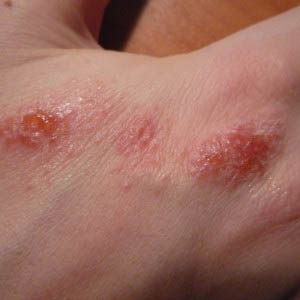
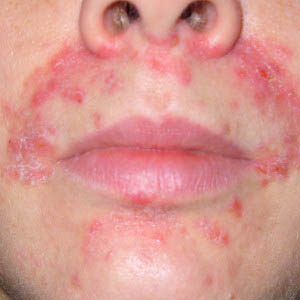
Symptoms of allergic dermatitis
This type of allergic reactions differs from others in specific symptoms. At the first stage of dermatitis, edematous formations, red in color, form in certain areas of the skin. On this basis, a rash appears, which looks like a large number of small nodules with an accumulation of fluid inside. Then these bubbles burst, covering the places of appearance with a layer of hardened substrate. Often, the first symptoms of dermatitis are drying and peeling of the skin, in places where the symptom develops further.
Diagnosis of dermatitis
This type of allergic reaction can be diagnosed on the basis of both a pronounced symptomatic manifestation and with the help of special tests. To confirm the diagnosis, skin tests, special tests for antibodies, as well as a laboratory study of local biological material are used.
Features of treatment
The measures that are taken to treat this type of allergy are individual. This is due to the fact that the intensity and localization of the symptoms of this disease can be different. General measures are the elimination of contact with the allergen and a special hypoallergenic diet that excludes foods that increase the symptoms of the disease.
Antihistamines are used as medications for treatment. This group of drugs prevents the effects of histamine on skin cells. This hormone is directly involved in the development of the symptoms of dermatitis, so its blocking leads to an alleviation of the course of the disease. The best choice would be to use modern antihistamines (cyterizin, erius, zyrtec, telfast). They have less activity in terms of the development of side effects than their earlier counterparts (diphenhydramine, diazolin, tavegil).
In the treatment of this type of allergy, the use of topical agents intended for application to the skin is important. Corticosteroid local agents (creams, ointments and gels) have the greatest effect on the symptoms of dermatitis: betamethasone, cortisone ointment, elocom, flucinar, etc. The choice of a specific remedy is based on the general condition of the patient, the intensity of the symptoms, as well as the places of their localization.
Hives
Urticaria is a type of skin allergy that is characterized by the appearance of slightly convex round formations. They can be either red or pink. Often the cause of intolerance reactions in the form of urticaria are: exposure to sunlight, low temperatures, cosmetics and household chemicals, food, drugs.
Urticaria comes in two forms: acute and chronic. In the acute form of urticaria, after interaction with the allergen, the symptoms appear instantly. As a rule, the rash spreads to the whole body along with severe itching. Acute urticaria is often accompanied by nausea, vomiting, disorders of the gastrointestinal tract.
Chronic urticaria is less intense than acute. Rashes with it are less abundant, the accompanying symptoms are also less pronounced. However, it lasts longer. It can often take several months. Accordingly, it requires a longer treatment. Perhaps the exception to this rule is the symptoms of itching, which are extremely pronounced in chronic urticaria.
Diagnosis of urticaria
The diagnosis of urticaria can be made not difficult, since the nature of the skin rash in this type of disease is very characteristic. At the same time, special diagnostic methods are needed to confirm its connection with allergies. These can be skin tests or blood tests for the presence of antibodies. If there is a suspicion of the food nature of the onset of intolerance, then in this case a special diet can be applied with the gradual introduction of products into the diet. This helps to track the dependence of the development of symptoms on the appearance of a particular product in the patient's diet.
Urticaria treatment
If during a special examination it was revealed that the urticaria is caused by an allergy in nature, then the first measure that will need to be applied is the elimination of the allergen. With food urticaria, foods - allergens - are eliminated from the diet. With medicinal urticaria, similar drugs are selected that do not contribute to the development of allergy symptoms.
To reduce the symptoms of urticaria, antihistamines are used, in tablet form. They have an impact not only on skin manifestations, but also on other allergic symptoms that can go hand in hand with urticaria. In severe urticaria, during which the rash diverges throughout the body, the temperature rises to 39 degrees, corticosteroid therapy is used.
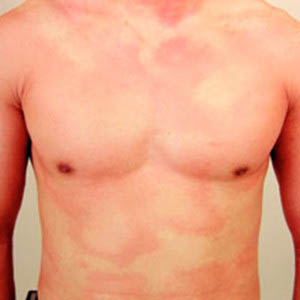
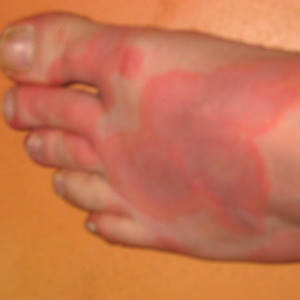
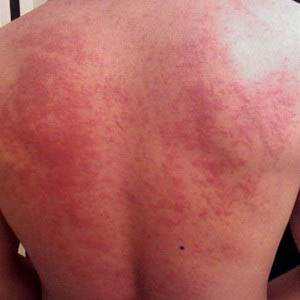
allergic rhinitis
This type of allergy is a combination of inflammatory processes that develop within the mucous membrane of the nasal sinuses, as well as in adjacent areas. From ordinary rhinitis, this case differs in that it occurs only after contact with allergens. In the absence of allergens, this disease does not manifest itself in any way.
Rhinitis: causes
The cause of rhinitis is the contact of allergens (the penetration of which into the body occurs with inhaled air) with antibodies. Such a mechanism for the development of an allergic reaction contributes to the rapid onset of symptoms of this type of allergy. The reaction is very fast. Often, sneezing is observed within 30 seconds after the allergen has entered, which is the first symptom of an allergy.
Most often, rhinitis is caused by such types of allergens as: dust, pollen, mold spores, perfumes and household chemicals, industrial emissions into the atmosphere.
Allergic rhinitis: symptoms
- Symptoms of rhinitis in allergic people are:
- Intense coryza with clear discharge;
- Swelling of the nose, which contributes to the narrowing of the airways;
- Nasal breathing disorders;
- Frequent bouts of sneezing;
- Intense itching in the nose.
With rhinitis, the patient breathes through the mouth, since the nose is blocked during the inflammatory reaction. Swelling of tissues appears around the nose. There is also redness of the eyes and increased tearfulness. Irritations in the nose cause the patient to comb the skin on the nose, causing it to become irritated and dry.
Diagnostics
If you have symptoms that indicate this disease, then you need to immediately visit two specialists: an ENT doctor and an allergist. Since the best solution against this type of immune response is to eliminate contact with the allergen, it is necessary to find out with the utmost haste both the presence of the allergic nature of rhinitis and the nature of the allergen (or group) that provokes it.
Diagnosis of rhinitis can be carried out both with the help of provocative tests and with the help of a blood test for the level of antibodies. With provocative tests, in a medical hospital, the patient is instilled into the nasal sinus with a standardized solution of the alleged allergen. The high rate of symptoms of this type of allergy makes it possible to identify the allergen within 20 minutes.
Rhinitis treatment
The first drugs that are prescribed for the treatment of rhinitis with allergies are antihistamines in the form of nasal drops or tablets. Preferably in this variant of therapy, such modern drugs look like: claritin, cetrin, erius, telfast, zirtek. Drop preparations are preferred when rhinitis is the only symptom, while tablet preparations are prescribed when there are concomitant symptoms. This is due to their ability to affect the entire body.
For the prevention of the disease, drops based on cromoglycylic acid can be used. This substance prevents histamine from entering the bloodstream. But due to the weaker therapeutic effect, these funds are not used independently.
Corticosteroid drops may also be involved, which have a more powerful therapeutic effect, but at the same time have a high risk of developing side effects. Cellulose-based sprays can reduce the degree of interaction with the allergen, which also helps to alleviate the symptoms of the disease.
Allergic conjunctivitis
Allergic conjunctivitis is a type of allergen intolerance, which is the development of inflammation localized in the eye area. In the allergic form of this disease, there is a clear relationship between the allergen and the onset of symptoms. Moreover, the development of the reaction occurs very quickly. Most patients, on the basis of their own observations, know which substance causes allergy symptoms.
The eye is an organ with a permeable mucous membrane that intensively absorbs incoming allergens. They are often: house and street dust, plant pollen, mold, animal hair. With food allergies, there are practically no symptoms of this disease. the intensity of symptoms is directly affected by the duration of contact with the allergen, as well as its quantitative ratio.
The main symptoms of this type of allergy are:
- itching, in the area of the eyelids and their severe swelling;
- fear of bright lighting;
- tearing;
- eye redness;
- intense swelling of the eyes;
- sensations of the constant presence of a foreign object;
- suppuration, in case of development of an infectious lesion.
Treatment of allergic conjunctivitis
The treatment of this type of conjunctivitis has its own specifics, which leads to equally specific methods of treatment. Their specification is determined by the need to act directly on the chain of an allergic reaction.
The following treatments are used for allergic conjunctivitis:
- Tableted antihistamines
The dosage is prescribed depending on the age of the patient. The newer agents are most preferred because they have less significant and intense side effects. These include: cetrin, claritin, cestin, erius, telfast. The use of antihistamines in tablet form reduces not only the symptoms of allergic conjunctivitis, but also other manifestations of this disease.
- Antihistamine drops
This group of drugs includes: histimet, opatanol, allergodil. Medicines in the form of drops affect the symptoms of conjunctivitis. Their appointment may become a necessity in the case when allergic conjunctivitis is the only manifestation of the disease.
- Eye corticosteroid drops
The most effective remedy that is used only to relieve acute manifestations of allergies. Their use can cause unwanted side effects, both local and general. However, with a strong intensity of manifestations of allergic conjunctivitis, their use is justified, due to their high efficiency.
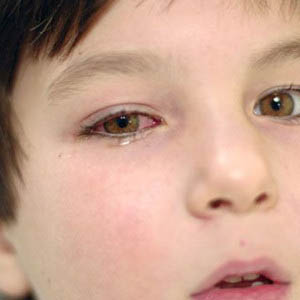
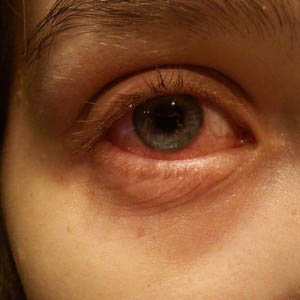
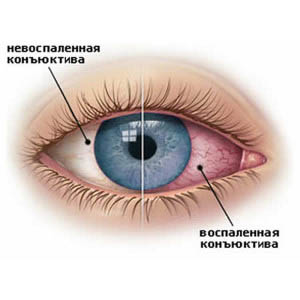
Allergic bronchial asthma
This type of allergy develops in people who have a high degree of sensitivity of the respiratory system in relation to allergens. Allergens that penetrate by inhalation provoke muscle spasm around the bronchial tree. As a result of this, after the penetration of the allergen, the body ceases to be sufficiently saturated with oxygen due to the blockage of the airways.
The development of asthma can contribute to:
- hereditary factors. If among the relatives of the patient there are people who are prone to any allergic reactions, then this can be decisive in favor of the development of this disease;
- Frequently transmitted infections can contribute to immune dysfunction leading to bronchial hypersensitivity;
- tobacco smoking;
- Harmful production factors (a large amount of dust, inhaled smoke, various synthetic substances);
- Improper nutrition, containing a large amount of preservatives, dyes, carcinogens.
The most common causes of asthma are:
- house or street dust;
- animal hair;
- flowering plants;
- mold;
- tobacco smoke;
- varnish and colorful products;
- evaporation of chemicals;
- volatile components of household chemicals.
Symptoms of allergic asthma:
- Respiratory disorders. A patient with this type of allergic manifestations experiences suffocation after exposure to an allergen. This is due to the fact that the bronchial lumen becomes much smaller and it is impossible to breathe normally;
- Wheezing breaths, which appears as a result of strained breathing;
- The use of additional muscles to carry out the act of breathing;
- Prolonged and intense bouts of severe coughing;
- The appearance of mucus in the bronchi.
Quincke's edema
Quincke's edema is an acute type of allergen intolerance that affects places with a developed mucous membrane and subcutaneous adipose tissue. These symptoms are caused by substances produced under the influence of allergens. Their activity provokes the expansion of local vessels and tissue edema. Most often, Quincke's edema affects the tissues of the face, larynx, lips, eyelids, genital area. At the same time, swelling of the larynx poses the greatest danger, since in this case, edematous processes cause difficulty in breathing, which can result in death.
Quincke's edema often precedes the appearance of a sudden onset of symptoms of urticaria, which covers the entire body in a matter of minutes. The tension of the surface integument, which causes Quincke's edema, provokes pain in the places of localization of this process. Quincke's edema also leads to a sharp decrease in blood pressure.
With this type of allergy symptoms, qualified first aid is needed, including:
- Injection solution of adrenaline;
- High doses of injectable corticosteroids;
- Antihistamines (most often Tavegil);
- sorbents;
- protease inhibitors.
Quincke's edema is most often caused by: food, insect bites, drugs.
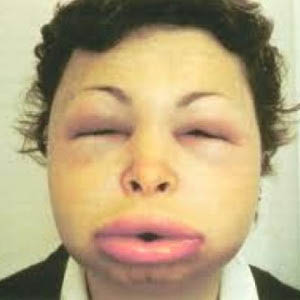
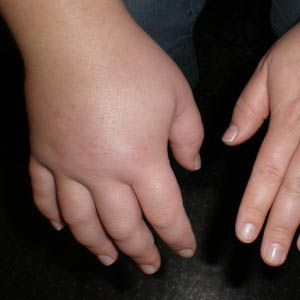
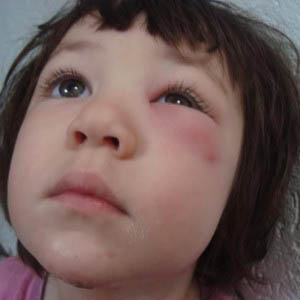
Anaphylactic shock
Anaphylactic shock is an extremely dangerous type of disease that develops in case of heightened sensitivity of the body. Anaphylactic shock can develop in a different time range, from a few seconds to several hours. With a certain feature of the body, even a minimal amount of an allergen can provoke this type of allergic complications.
Symptoms of anaphylactic shock
With this type of hypersensitivity, severe laryngeal edema and bronchospasm develop, which disrupts the act of breathing. This leads to acute oxygen starvation, which, with the duration and intensity of symptoms, can cause death. A sudden drop in blood pressure can cause cardiac arrest.
Treatment of anaphylactic shock requires the use of special measures, with which the patient must be introduced by the doctor. Patients with this predisposition should carry a special kit with them, which consists of adrenaline, corticosteroids and antihistamines, as well as a number of other emergency treatments.
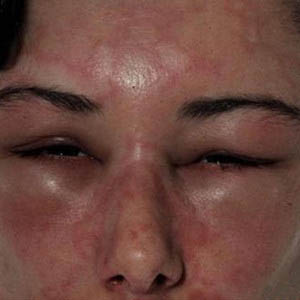
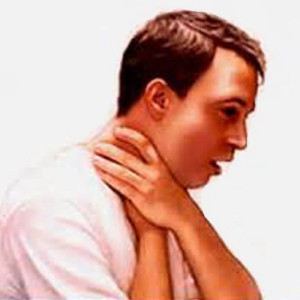
Allergy in children
Allergy in children is a very topical issue. This is due to the peculiarities of the emerging immunity of the child, who is not yet ready for proper work. Various types of intolerance in children can manifest themselves as a result of improper feeding, during which natural products are introduced too early. It can also be caused by an excessively large portion, which the child's gastrointestinal tract is not able to digest efficiently.
The appearance of various types of food intolerance in children is due to the fact that the formation of the gastrointestinal tract is in the developmental stage. The lack of a sufficient concentration of intestinal microflora leads to the fact that food is not fully digested. Whole proteins enter the blood, to which the child's body reacts extremely sharply.
Food allergies are the most common type of allergy in children, often manifesting as symptoms of dermatitis. Certain areas of the skin begin to redden, peel off, this is accompanied by profuse itching. Then the places of localization of the allergy are transformed with the formation of a nodular rash with liquid content.
How to avoid allergies in a child?
Of course, if a child has a predisposition to the development of a persistent allergic disease, then it is impossible to completely protect oneself from this disease. But the manifestation of allergies in children, which are caused by errors in the diet or care of the child, can be avoided. To do this, the following precautions must be observed:
- Pay close attention to your child's nutrition. Natural nutrition should be introduced no earlier than 6 months. At the same time, the initial portions should be minimal, with an age-appropriate sequence of products;
- Use household chemicals with great care. Give preference to special detergents for children and special children's soap;
- Maintain cleanliness of the home, but do not create conditions under which excessive sterilization of the home occurs. In a word, observe a reasonable measure, since excessive sterilization can cause a weakening of the immune system.
- Breast milk is the best product for feeding a baby. The transition to nutrient mixtures should be carried out only for good reasons.
